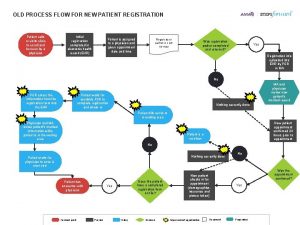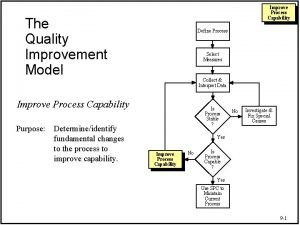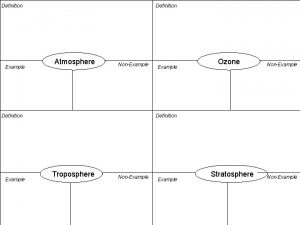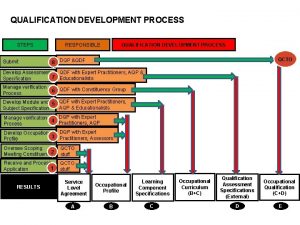Development Development Definition The process of improving the





















- Slides: 21

Development

Development § Definition: § The process of improving the material condition of people through growth and diffusion of technology and knowledge § Every place, regardless of size, exists at some level of development § MDCs § More developed countries § On wealthier side of development spectrum § LDCs § Less developed countries § On the economically poorer side of the development spectrum

Measuring development § There are several ways to measure development § Different factors: § Gross Domestic Product (GDP) § Value of total outputs of goods and services produced in a country, usually over one year § Gross National Product (GNP) § Includes all goods and services owned and produced by a country overseas § Purchasing Power Parity (PPP) § Measurement tool for each currency to buy an equal amount of goods § Allows economists to make “apple to apple” comparisons § Informal Sector § Includes all business transactions that were not reported by the government § Not calculated in GDP § Exists for several reasons

Human Development Index § Formula used to measure a country’s development level and compare it to other regions and countries on the rankordered list of countries § Country’s level of development can be distinguished by three factors: § Economic § Social § Demographic § HDI examines all three factors § HDI created by United Nations § Created by selecting: § One economic factor (Gross Domestic Product) § Two social factors (literacy rate, education) § One demographic factor (life expectancy) § Highest HDI is a 1. 000, or 100% § Lowest score is a 0. 000, or 0%

Map of HDI

Economic Indicator: GDP § Gross Domestic Product per capita § In MDCs GDP per capita exceeds $30, 000 § In LDCs less than $3, 000 § GDP § Definition: § value of the total output of goods and services produced in a country, normally during a year § Divide GDP by total population to get the average contribution from individuals § For example: § The GDP for the U. S. in 2009 was $14 trillion § Divided by pop of 307 million= $46, 600 § The higher the per capita GDP, the greater the potential for ensuring that all citizens enjoy comfortable life § GDP does not perfectly measure country’s development § GDP measures average (or mean) wealth, not its distribution

GDP per Capita

Three other Economic Indicators § The other economic indicators useful in distinguishing between MDCs and LDCs § § § Types of jobs Worker productivity Availability of consumer goods

Types of Jobs § Five categories § Primary § Directly extract resources from earth § Secondary § Manufacturing § Tertiary § Provision of goods and services § Quaternary § Creation and transfer of information § Quinary § Highest level decision making § Distribution of jobs among workers differs greatly between MDCs and LDCs § % of primary jobs in LDCs is 60%, MDCs is less than 5% § High agricultural % means people producing food for mainly survival, not sale

Productivity § Definition: § Value of a particular product compared to the amount of labor needed to make it § Workers in MDCs are more productive than LDCs § Productivity can be measured by the value added per capita § Value added: gross value of the product minus the costs of raw materials and energy § $5, 000 in U. S. , $7, 000 in Japan § $500 in China, $100 in India § MDCs § Workers produce more with less effort due to technology (machines, tools, equipment) § LDCs rely solely on human labor and animal power § Larger per capita GDP in MDCs in part pays for the manufacture and purchase of machinery § Which in turn makes workers more productive and generate more wealth

Consumer Goods § Part of the wealth generated in MDCs is used to purchase goods and services § Especially important are goods and services related to transportation and communications § Including motor vehicles, telephones, and computers § Products that promote better transportation and communications are accessible to virtually all residents in MDCs § Vital to the economy’s function and growth § In LDCs, these products do not play a major role in daily life § LDCs, most people can not afford them § Most people familiar with goods, see them as symbol of development § Possession of consumer goods is not universal in LDCs § “haves” and “have-nots” § Technological change may help to reduce the gap in access to communications betweens MDCs and LDCs § Cell phone ownership rapidly expanding § Don’t require costly investment of installation of wires

Social Indicators of Development § MDCs use part of their wealth to provide schools, hospitals, and welfare services § Result= people are better educated, healthier, and better protected from hardships § Infants more likely to survive, adults live longer § In turn, well-educated, healthy, and secure population can be more economically productive § Social Indicators § Education/ Literacy § Health/ Welfare

Education and Literacy § In general: § Higher the level of development = greater quantity and quality of a country’s education § Quality of education is measured in two ways: § Student/teacher ratio § LDCs more students per teacher § = less personalized instruction § Literacy rate § Percentage of a country’s people who can read and write § 98% + in MDCs, 60% in LDCs

Health and Welfare § People are healthier in MDCs than LDCs § Health influenced by diet § MDCs: § MDCs use part of their wealth to protect people that cannot work § Public assistance for sick, elderly, poor, disabled, orphaned, veterans of war, widows, unemployed, or single parents § eat more calories and protein § LDCs: § receive less than the daily minimum allowance of calories and proteins § MDCs health care is a public service § Available at little to no cost § Government programs pay for more than 70% of healthcare costs in European countries § Exception U. S. where private individuals are required to pay an average of 55% health care costs, more similar to LDCs § Countries in NW Europe provide highest level of public-assistance § Denmark, Norway, Sweden § Today MDCs are having difficulty maintaining these programs

Demographic Indicators of Development § MDCs display demographic differences from LDCs § Demographic Indicators § Used by UN’s HDI: § Life expectancy § Other: § § § Infant mortality rate Natural increase rate Crude birth rates

Demographic Indicators § Life expectancy § Better healthcare and welfare in MDCs permit people to live longer § Babies born today can expect to live into their 60 s in LDCs, 70 s in MDCs § Gap in LE greater for females than males § Females – 13 years longer in MDCs § Males- 10 years longer in MDCs § MDCs have a higher % of older people § = high dependency ratio § Infant Mortality Rate § Better health allows more infants to survive in MDCs § 6% die in LDCs, less than 1% in MDCs § Greater in LDCs because: § Babies die from malnutrition, lack of medical attention, dehydration, poor medical practices § Natural Increase Rate § LDCs having more babies! § Averages 1. 5% in LDCs § Averages 0. 2% in MDCs § Natural increase strains a country’s ability to provide hospitals, schools, jobs, and other services make its people healthier and more productive § LDCs must allocate resources for expanding population rather than improve care for current population § Crude Birth Rate § LDCs have higher NIRs because they have a higher CBR § LDCs= 23 per 1, 000 § MDCs= 12 per 1, 000 § CBR does not indicate a society’s level of development § High # of old people in MDCs

Distribution of MDCs and LDCs § Countries of the world can be categorized into nine major regions according to their level of development § More Developed Regions § § § North America Europe Russia Japan Oceania § Less Developed Regions § § § § Latin America East Asia Southwest Asia/ N. Africa Southeast Asia Central Asia South Asia Sub-Saharan Africa

The Development Gap § Definition: § Widening difference between development levels in MDCs and LDCs § MDCs are improving in their development levels faster than are LDCs § In the last decade, the GDP nearly tripled in MDCs but only doubled in LDCs § The rate of population increase fell by nearly 85% in MDCs, but by less than 5% in LDCs § North-South Gap § Refers to the pattern that MDCs are primarily located in the Northern Hemisphere § LDCs are mainly located in the Southern Hemisphere

Gender Inequality § A country’s overall level of development masks inequalities in the status of men and women § Gender inequality exists in every country of the world § No country in the world where women are treated as well as men § To measure extent of each country’s gender inequality the UN has created two indexes: § Gender-related development index (GDI) § Compares level of women’s development with that of both sexes § Gender Empowerment Measure (GEM) § Compares the ability of women and men to participate in economic and political decision making

Gender-Related Development Index (GDI) § Constructed similar to the HDI § Economic indicators § Per capita female income as a % of per capita male income § Social indicators § # of females enrolled in schools compared to # of males § % of literate females compare to males § Demographic indicators § LE of females compared to males § The GDI penalizes a country for having a large disparity between the well-being men and women § Example: Hungary and Saudi Arabia § A country with complete gender equality would have a GDI of 1. 0 § A high GDI means that both men and women have achieved a high level of development § A low GDI means that women have a low level of development compared to men

Gender Empowerment Measure (GEM) § GEM measures the ability of women to participate in the process o achieving improvements in their status § Political and economic power § GEM is calculated using: § Economic § Per capita female income as a % of per capita male income § % of professional and technical jobs held by women § Political § % of administrative jobs held by women § % of members of the national parliament who are women § Highest score= 1. 0 § Regions with highest GEMs are: § § § North America Northern Europe Oceania § Regions with lowest GEMS are: § Africa § Asia
 Improving patient registration process
Improving patient registration process Improving process capability means;
Improving process capability means; Ten steps to improving college reading skills 6th edition
Ten steps to improving college reading skills 6th edition Nurses improving care for healthsystem elders
Nurses improving care for healthsystem elders Improving vocabulary skills 4th edition answer key
Improving vocabulary skills 4th edition answer key Is drivers a verb
Is drivers a verb Improving software economics set 1
Improving software economics set 1 Chapter 12 lesson 1 benefits of physical activity
Chapter 12 lesson 1 benefits of physical activity Improving software economics set 1
Improving software economics set 1 Improving service quality and productivity ppt
Improving service quality and productivity ppt A linear-time heuristic for improving network partitions
A linear-time heuristic for improving network partitions Difficulties of improving quality
Difficulties of improving quality Improving own learning and performance examples
Improving own learning and performance examples Listening gap communication
Listening gap communication Ten steps to advancing college reading skills
Ten steps to advancing college reading skills Starbucks inputs and outputs
Starbucks inputs and outputs Chapter 13 sentence check 1
Chapter 13 sentence check 1 A sense of belonging improving student retention
A sense of belonging improving student retention Using assessment data for improving teaching practice
Using assessment data for improving teaching practice Behavioral assessment scale for intercultural competence
Behavioral assessment scale for intercultural competence Thoughtworks code witch
Thoughtworks code witch Writing by
Writing by









































